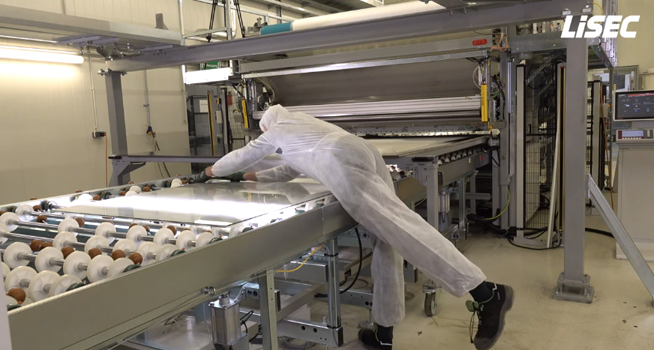Assembly is a time-critical process in LiSEC laminated glass line, and requires the most time, since manual processes often used. The following influencing factors can improve the quality and efficiency of foil laying.
Gentle processing
The foil must be placed on the clean glass surface free of cracks, wrinkles and other defects. The foil must not be pulled excessively, as there is a risk of deformation and stretching of the foil. If the foil reverts to its original shape in the further course of the laminating process, the result is rejects.
Correct Positioning
Foil laying can be done either manually or mechanically. As a rule, exact and correct positioning of the glass is carried out by the positioning table and the carry-over lifter.
When manufacturing glass balustrades, all-glass doors made of laminated safety glass or glass canopies, the top edge or front edge should have minimal or no glass offset. This is achieved by aligning to the reference edge with a ±0.5 mm tolerance on half the maximum possible glass length to be processed or a ±1,0 mm tolerance on the maximum possible glass length to be processed.
Assembly
Assembly can vary depending on production requirements. Some common variants are:
Basic Mode
• Assembly with a carry-over lifter
• Foil laying manual or automatic
• Width adjustment of the table manually or automatically from 2.6m width onwards
One by One Mode
• Automatic length measurement of the foil
• Pre-cutting of the foil with an automatic foil knife
• Storage on the foil shuttle
• Pairwise glass transport to the assembly table
• Manual assembly of the glass by the staff
Speed Assembling Mode
• Mounting by lifter at half length of the mounting table
• Automatic length measurement of the foil
• Pre-cutting of the foil with an automatic foil knife according to the width
• Turning of the foil on the shuttle
• Manual laying of the foil by the staff
• Manual or automatic trimming




